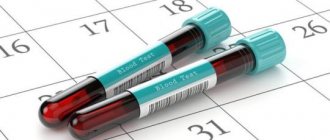What is progesterone
Progesterone is a progestogenic neurohormone that is important for the female body. Its level has a strong impact on sexual development and reproductive health, so not only pregnant women need to monitor progesterone levels.
Progesterone in women affects:
- on the ability to conceive, progesterone thickens the uterine walls, relaxes the muscles and promotes the unhindered attachment of the fertilized egg;
- on body weight - with a reduced level of the sex hormone, it is much more difficult to fight excess weight even with a healthy diet;
- to bear a child, the hormone is necessary for the development of the placenta and some fetal tissues.
Attention! Both low and high levels of the progestogen substance lead to unhealthy weight fluctuations in women, irregular periods and difficulty conceiving a child.
How to eat right?
In order for progesterone to be normal, you need to eat a balanced and nutritious diet. And here are some general rules for women:
- Watch your weight: do not become underweight, but also get rid of extra pounds if you have them.
- The menu should be varied and balanced, including different products.
- Try to follow a diet and eat smaller meals: often (up to five to six times a day) and in small portions. This will normalize metabolism, improve food processing and absorption of nutrients from foods.
- Chew all food slowly to help it digest faster. In addition, prolonged chewing promotes the complete absorption of food components (carbohydrates begin to be broken down in the oral cavity by saliva).
- Prefer gentle and healthy heat treatment methods, which include oven baking, steaming, stewing and boiling. Such methods help to preserve maximum useful components in food.
There are no products that contain natural progesterone. But there is food that helps increase and maintain the concentration of the hormone in question. And now you know them.
(voted: 1, rating: 5.00 out of 5)
Share the news on social networks
Ask a Question! You have questions? Feel free to ask any questions! And our staff specialist will help you. Go>>
- Recommended Articles
- Femibion when planning pregnancy
- Fish oil (Omega-3) when planning pregnancy
- Aevit when planning pregnancy
« Previous entry
The benefits of foods containing progesterone
Some products stimulate the active production of progesterone by a woman’s body. It is very useful to use them because they:
- increase the likelihood of conception, the mucous membrane of the uterus with a good level of the hormone thickens, and the egg attaches to the walls of the organ without problems;
- help prepare the muscles of the uterus and pelvic ligaments for childbirth;
- contribute to the accumulation of minimal reserves of subcutaneous fat necessary for health;
- prevent fetal rejection in the early stages of pregnancy;
- stimulate breast enlargement;
- improve lactation during breastfeeding.
Foods with progesterone include nuts, olives and beef
Products that promote the production of progesterone are also useful in that they prevent mastopathy. Progesterone is an estrogen antagonist and prevents the increase in the level of these hormones. Since it is against the background of excess estrogen that mastopathy occurs, food containing a progestogen compound protects the woman’s body from the disease. Normal levels of the hormone in the body prevent the development of diabetes because it regulates blood sugar.
Hormone functions
Progesterone in women performs the most important functions in the body:
- Regulates the menstrual cycle;
- Promotes timely ovulation;
- Prepares the female uterus for bearing an embryo;
- Prevents spontaneous miscarriages;
- Stimulates the formation of the layer of subcutaneous fat necessary during pregnancy;
- Helps the uterus increase in size as the fetus develops;
- Positive effect on lactation;
- Creates protection for the mammary glands from mastopathy.
If the amount of progesterone in the body differs from the norm, the woman feels unwell. In case of hormone deficiency, the following symptoms may be observed :
- Habitually dissatisfied mood;
- Swollen mammary glands;
- Hot temper and causeless irritation;
- Distension;
- Increase in body weight before the start of the cycle;
- Pain at the beginning of the cycle.
In these cases, you need to go to a specialist who will conduct an examination and prescribe progesterone hormone replacement therapy. But, it is much safer to slightly change your diet in favor of foods that stimulate the generation of progesterone and increase the hormone naturally.
Before any treatment, additional tests must be taken. Perhaps these symptoms are not associated with a lack of progesterone. If natural progesterone is already high, and the patient begins to increase it even more, this will negatively affect her health. To avoid this situation, you need to know the signs of the presence of a hormone in large quantities:
- Ophthalmological problems - ripples in the eyes, fatigue, decreased visual acuity;
- Increased body hair;
- Allergy in all its manifestations;
- The appearance of signs of psychosis - insomnia, anxiety, irritability, depressed mood;
- Failures in the length of the menstrual cycle, pain during menstruation;
- Decreased blood pressure;
- Pimples.
If such signs occur, you must report them to the specialist prescribing treatment. If low progesterone is detected, and the doctor has prescribed treatment with medications, it is worth introducing hormone-increasing products into the menu for a more effective effect of therapy on the body.
Harmful foods that increase progesterone
The sex hormone is vital for the female body, and as such intolerance does not exist. However, uncontrolled consumption of foods that increase the hormone can lead to its excess, and this will be harmful to health.
With excess consumption of foods that increase progesterone, the following negative effects may develop:
- blurred vision;
- hypotension;
- acne and blackheads;
- hirsutism, or excessive hair growth on the body and face;
- menstrual irregularities.
Excess of the hormone provokes increased nervousness in women and leads to insomnia, causing allergic irritations on the skin. When the level of progestogen is too high, there is a tendency to gain weight, and it becomes difficult to control body weight even with the help of diets.
Vitamins
Vitamins and minerals that help increase the level of sex hormone in the blood In addition to herbs that contain progesterone, you should add to your diet foods that contain certain vitamins that also help fight hormone deficiency.
Magnesium
Magnesium is the fourth most abundant mineral in the human body, and researchers estimate that about 75% of people are deficient.
Magnesium not only allows the body to absorb calcium, but also regulates the functions of the pituitary gland, which is responsible for hormone levels. The endocrine gland, located at the base of the brain, regulates the production of FSH, LH and TSH, which in turn are responsible for the production of estrogen and progesterone.
Required amount of magnesium per day:
- 320 mg;
- during the period of gestation, the body needs 450 mg.
If the patient has a deficiency of endogenous steroid, it is necessary to consume products that increase progesterone, that is, containing magnesium. These include: white pumpkin seeds, mackerel, dark chocolate, brown rice, nuts and pumpkin seeds, and small amounts of spinach.
Vitamin C
Vitamin C is an ascorbic acid that acts as an antioxidant. It protects the body by neutralizing free radicals that can damage cellular structures. In a 2003 study, women who took vitamin C had a significant increase in progesterone levels. By consuming 750 mg per day, the concentration of the hormone increases by 77%.
What foods increase progesterone in women? By adding the following food to your diet, you can increase the level of sex hormone (mg per 100 g):
- yellow pepper - 3;
- dark green leafy vegetables - 120;
- kiwi - 64;;
- oranges - 67.7.
Vitamin C is a water-soluble vitamin, so it loses its properties when processed. A Danish study found that if you boil broccoli for 5 minutes, they lose 36-55% of this substance. Therefore, to increase progesterone, foods with vitamin C are consumed fresh.
A person needs a minimum of 85 mg per day, a maximum of 250–500 mg. Pregnant women are recommended to consume 500 mg of vitamin C per day.
You should not eat too many foods containing this substance. More than 1000 mg of vitamin C per day will lead to vaginal dryness, a too acidic environment is formed, and as a result, conception may not occur.
Vitamin B6
The next organic compound that has been shown to increase the concentration of progesterone in the blood as a result of its consumption is vitamin B6. Getting enough of this substance is vital when trying to get pregnant as it helps regulate hormones.
A study found that taking vitamin B6 in doses of 200–800 mg/day can reduce blood estrogen levels, increase progesterone levels, and lead to improvements in PMS symptoms. Studies have also shown that women who consume products containing this organic substance reduce the risk of miscarriage by 50%.
The female body requires at least 1.9 mg of vitamin B6 per day. If progesterone is greatly reduced, up to 50 mg of an organic compound should be taken.
You should weigh herbs that increase progesterone in women and foods, and calculate the amount of vitamin eaten so as not to exceed the norm of 100 mg per day. An overdose will lead to a rapid increase in the concentration of the hormone in the blood and damage to the nerves.
Vitamin B6 is contained in (mg per 100 g): sunflower seeds - 35, pistachio nuts - 1.12, tuna - 1.04, prunes - 0.75.
Zinc
Zinc acts on several organs that are involved in progesterone production, including the pituitary gland and ovaries. It increases FSH levels, prompting the pituitary gland to produce it, which in turn causes ovulation, and also stimulates the ovaries to produce estrogen and progesterone.
It is recommended to consume 15–25 mg of microelement per day. To increase progesterone, what foods to eat? Zinc is found in the following foods: cooked oysters - 78.6 mg, beef - 12.3 mg, wheat - 16.7 mg, pumpkin seeds - 10.3 mg, nuts - 5.6 mg.
L-arginine
To understand how L-arginine increases the concentration of the steroid hormone in a woman’s blood, you need to understand how the ovulatory phase occurs. Before ovulation, the mature oocyte is located in the follicle to protect it from the negative effects of the environment and pathogenic microflora. Their number increases due to a hormone called follicle-stimulating hormone. However, only one follicle is selected for ovulation and the rest are reabsorbed by the ovaries. The dominant follicle increases to approximately 20 mm in diameter. This process takes about 14 days and ends with ovulation.
When the ovulatory phase begins, the oocyte is released and moves along the fallopian tube to the uterus. A growth forms on the ovary, which is called the corpus luteum. It produces progesterone to support pregnancy. Once the corpus luteum has broken down, after about 14 days, progesterone production stops, causing menstruation to begin.
So what does L-arginine have to do with the corpus luteum? L-arginine is an annimic acid that creates nitric oxide, which dilates and relaxes arteries and blood vessels, increasing blood flow. The biological fluid in the corpus luteum circulates at high speed. It holds the corpus luteum by secreting progesterone for two weeks after ovulation.
If the corpus luteum is not sufficiently supplied with blood, it will disintegrate early, causing the release of progesterone to stop. Where it leads? This leads to a short luteal phase and estrogen dominance towards the end of the menstrual cycle, resulting in decreased progesterone levels.
How much L-arginine does a woman need? The recommended dosage should not be less than 3-6 g per day, and also exceed 60 g per day. What foods contain progesterone, or more precisely L-arginine, which increases its concentration?
Foods high in annimic acid: turkey breast - 16 g, chicken breast - 9 g, 1 cup pumpkin seeds - 7 g, 200 g peanuts - 4.6 g.
Vitamin E
A Journal of Ovarian Research study found that women who received 600 mg of vitamin E per day had an 83% improvement in corpus luteum circulation and an increase in progesterone in 67% of women.
You need to consume 100–130 mg of vitamin E per day. The maximum is 1000 mg. It is found in almonds, sunflower seeds, shellfish, trout, and olive oil.
Which foods contain the most progesterone?
If there is a lack of progestogen substance, it can be increased with the help of a well-designed diet. Progesterone is found in foods and herbs in pure form or is produced in large quantities through certain foods.
Dairy
Natural progesterone in foods is most conveniently obtained from milk, fatty types of cheese and fatty cottage cheese. They contain a natural hormone necessary for the female body. Regular consumption of dairy foods helps maintain the sex hormone at a good level and prevent its decrease.
Milk and dairy products contain natural progesterone
Foods rich in cholesterol
Seafood, fatty fish, caviar, vegetable oils and eggs do not contain the female hormone itself, but they do contain quite a lot of cholesterol. It, in turn, is the initial product of progesterone synthesis. When cholesterol is broken down, the body independently synthesizes a progestogen substance, thus improving hormonal levels.
Recommended reading: The benefits of chicken eggs
Fatty fish and seafood are rich in cholesterol, and progesterone is produced from it
Legumes and nuts
Beans, peas and lentils, as well as all types of nuts, contain fatty acids and tocopherol. They also stimulate the body to produce progestogenic substances, so the products effectively regulate female hormonal levels.
Fats necessary for progesterone synthesis can be obtained from nuts
Lean meat
To increase the hormone, you can eat young veal and rabbit meat, chicken and turkey fillet, and animal liver. At the same time, women need to be careful - excess protein foods can lead to an undesirable increase in muscle mass.
Not only red meat, but also white meat improves progesterone production
Whole grain cereals and potatoes
Buckwheat and oatmeal have a good effect on hormone levels. You can also eat potatoes and rice, which contain starch.
We recommend reading: Potatoes: beneficial properties and contraindications
Potatoes are rich in starch, which enhances progesterone production
Vegetables and berries
To increase progesterone, it is useful to eat cabbage and avocado; in particular, the latter product contains a lot of fatty acids and therefore promotes the synthesis of the hormone. Olives and any seeds increase sex hormones.
We recommend reading: Useful properties and contraindications of avocados
Avocado is a valuable source of fatty acids important for the synthesis of progestogen hormones
Herbs to increase progesterone
The list of foods that increase progesterone includes some herbs. In particular, the following will be useful for women:
- plantain;
- cuff leaves;
- berries of common twig - they are present even in the pharmaceutical preparations Mastodinon and Cyclodinone.
If there is a lack of sex hormone, it is useful for women to brew this infusion - mix 1 large spoon of mantle leaves with 1 small spoon of plantain seeds. The mixture is poured with boiling water and left for 3 hours under the lid, and then taken three times a day, 1 large spoon.
You can raise the level of progestogen hormones with infusion of plantain and cuff
Increasing hormones with folk remedies
You can increase the concentration of progesterone by consuming herbal infusions. They contain or stimulate hormone synthesis in the body. The most effective are
- common twig;
- ordinary cuff;
- plantain;
- wild yam;
- raspberries;
- chaste vitex;
- Potentilla gossamer;
- meadow lumbago.
They must be taken from the 15th to the 25th day of the cycle. If the decoctions were prepared correctly and the dosage was followed, the concentration of progesterone will increase.
Popular recipes
- Take 40 g of raspberry leaves, pour 200 ml of hot water over them. Wait 1 hour. Filter the cooled broth and then consume it in small portions throughout the day.
- Place raspberry leaves and wild yam in equal quantities into a container. Moreover, it is best to use dry raspberry leaves. Then take 20 g of raw material and add 200 ml of boiling water. Wait 203 hours, cool, filter, and then take 20 ml 3 times throughout the day.
- Plantain seeds – 10 g, combine with 20 g of mantle. Pour boiling water over all 200 ml. Leave for 2 hours, filter and judge. Take 3 times during the day in small sips.
- Take 40 g of twig berries and chop them first. Add 400 ml hot water. Wait 3 hours. Consume throughout the day, taking small sips. When taking this infusion, you need to understand that you need to drink it in the second half of the cycle, starting on the 15th day. The total number of days will be 10.
- To increase the concentration of progesterone, you can use a tincture. You will need to take 100 g of red brush and 1 liter of vodka. Wait 30 days, and store the tincture in a place where daylight does not penetrate. Take the finished product 40 drops before meals 3 times a day. Before use, the composition should be diluted with water.
- Our grandmothers also actively used the properties of astragalus root in the treatment of various female diseases. It turns out that when used it is possible to influence the active production of progesterone. You need to prepare a tincture from this product. It can be obtained with water or vodka. For the first case, you need to take 20 g of the main component, chop it finely and add 400 ml of boiling water. Pour the mixture into a thermos and wait 40 minutes. Take 1/3 glass after meals. Use 3 times a day in total. If you decide to create a tincture based on vodka, then you need to take 40 g of astragalus root, grind it and add 2 glasses of vodka. Wait 10 days, while placing the container in a dark place. Use the finished product in an amount of 10-20 drops. Only the attending physician can prescribe the exact dosage. Take 2-3 times during the day.
Possible contraindications
Don't naively think that every herb and product contains progesterone. All of these recipes directly affect hormone levels. For certain pathologies, taking some herbs is prohibited. There are also a number of medications that cannot be taken together with medicinal plants. For this reason, it is necessary to agree on everything with your doctor. The same herb can affect two people differently.
Progesterone-lowering foods
If the level of the hormone is too high, and it is necessary to bring it to lower levels, then first of all, you need to remove all foods that increase progesterone from the diet.
You should reduce your consumption:
- dairy products and vegetable fats;
- nuts and legumes;
- seeds, beef and chicken, pumpkin and avocado.
Some of these foods cannot be removed from the menu entirely because they are too important to overall health. Therefore, it will be enough to simply reduce consumption to a minimum.
In order to reduce progesterone, you can use:
- decoction of rowan berries;
- Mint tea;
- carrot juices and infusions;
- Drinks containing caffeine - black tea and coffee.
To reduce progesterone, you can use rowan decoction
Important! Although black tea and coffee reduce the production of sex hormones, they are harmful to health in large quantities; you need to drink them little by little.
Possible negative consequences
You must also be prepared for the fact that even the highest quality medications, when taken, can lead to certain negative consequences. Most often, a person loses his appetite, gains excess weight, and his mood worsens. The main goal of drug treatment is only to increase the level of the hormone progesterone, but first you need to understand what triggered its decrease.
If the underlying cause of progesterone deficiency is unknown, then medications will need to be used on an ongoing basis, which is unacceptable. Therefore, in such cases, it is best to know which foods contain progesterone and estradiol, since these sources of hormones are at least natural, which is why the likelihood of negative effects will be lower.
Contraindications to progesterone-rich foods
There are diseases and conditions of the body in which the consumption of progesterone foods must be reduced. It is not recommended to eat foods that increase hormones:
- for tumors in the breast and reproductive organs;
- with a tendency to hypotension;
- for obesity;
- with increased hair growth and profuse acne;
- with a tendency to edema.
It is also undesirable to eat foods that promote the production of the hormone if you have a weakened immune system, since the substance further reduces immune resistance.
The normal level of hormone content in the blood of women by age and at different periods of life
Currently, there is no absolute consensus among doctors about the exact presence of the hormone in the female body. However, they adhere to certain indicators.
They are measured in nmol/l and their quantitative indicators depend on:
- phases of the menstrual cycle – follicular (0.32–2.23), luteal (6.99–56.93), ovulatory (0.49–9.41), postmenopause (less than 0.64);
- days of menstruation;
- trimesters of pregnancy – first (8.9–468.5), second (71.5–303.2), third (88.7–771.5).
In women who use hormonal contraceptives, these indicators change slightly.
Table No. 1. Changes in progesterone levels depending on the day of the cycle:
| Days | Indicators |
| 1–5 | 0,32–2,23 |
| 6–8 | 0,37–4,41 |
| 9–13 | 0,41–4,81 |
| 14–15 | 0,48–9,41 |
| 16–18 | 0,51–9,67 |
| 19–28 | 6,9–56,93 |
The range of numbers is very wide. This is because the presence of progesterone depends on many factors.
Namely:
- emotional condition;
- way of living;
- taking medications;
- Times of Day;
- degree of physical activity.
Conclusions about the hormone content in the blood should be made by the attending physician based on the analysis performed and the individual characteristics of the patient’s body.
Table of products with progesterone
For convenience, products that promote enhanced production of the sex hormone can be presented in table form:
| Product category | Best Sources of Progesterone |
| Dairy | Whole cow's milk, full-fat cottage cheese, cream, sour cream and full-fat cheeses |
| Meat | White meat chicken, turkey and rabbit, beef and pork |
| Vegetables | Potatoes, white cabbage, broccoli |
| Fruits | Avocado, pears, apples, olives |
| Legumes | Lentils, beans and peas |
| Nuts | Walnuts, hazelnuts, peanuts, pistachios, pine nuts, cashews |
| Dried fruits | Raisins and dried apricots |
| Vegetable oils | Olive, rapeseed, sunflower oil |
| Fish and seafood | Shrimp, tuna, salmon, trout, salmon, squid, oysters |
| Other products | Cereal seeds, whole grains, eggs |
Advice! When choosing products, you need to rely on test results and doctor’s advice, since it is impossible to calculate the average daily dosage of progesterone. Indicators for women differ depending on the state of the body, day of the cycle or stage of pregnancy.
Symptoms of P4 hormone deficiency
You should carefully monitor your health and promptly identify symptoms indicating a low level of the substance. The main indicator of deficiency is menstrual irregularity, which has a bad effect on the condition of the body. Symptoms of progesterone deficiency:
- groundless decrease and increase in body temperature;
- dizziness, headaches and fainting;
- dryness in the vaginal area;
- severe pain during the menstrual period;
- bleeding between periods;
- depression, irritability, causeless aggression;
- increasing the density of vegetation on the body;
- hyperfunction of the sebaceous glands;
- decreased skin elasticity;
- sudden weight gain, swelling;
- decreased libido;
- there is pain and heaviness in the mammary glands;
- increased sweating;
- increased blood pressure;
- weakness, fatigue, insomnia.
The symptoms listed above are not specific, so a woman does not always pay attention to them immediately, and delay is fraught with serious consequences. A lack of the required substance will lead to disruption of the cycle, the manifestation of dysfunctional uterine bleeding, the formation of cysts on the ovaries, and uterine fibroids.
A decrease in hormone concentration is accompanied by unpleasant symptoms.
Manifestations of deficiency include:
- 1Irregularities of the menstrual cycle from prolongation of the second phase to amenorrhea.
- 2Recurrent miscarriage.
- 3Swelling, engorgement of the mammary glands.
- 4 Mood swings.
The causes of hormonal deficiency can be:
- 1Pelvic inflammatory diseases.
- 2Pathology of the corpus luteum.
- 3 Diseases of the pituitary gland.
- 4Cysts and tumors of the ovaries.
- 5Taking certain medications.
- 6Induced abortion.
- 7Unbalanced diet with a sharp limitation of animal fats.
Depending on the clinical situation, hormonal drugs containing progesterone are prescribed in the form of an oil solution, Duphaston, Utrozhestan, Susten tablets or vaginal forms.
Rules for consuming foods and herbs with progesterone
Most foods that enhance the production of sex hormones are included in the normal diet. To increase the progestogen substance, it is necessary to take them in increased dosages, but before this you need to consult a doctor. You should make sure that problems with well-being are associated precisely with a lack of the hormone, and not with other reasons.
Products help balance hormonal levels in women only with minor disruptions
Taking foods high in progesterone or its precursor, cholesterol, only makes sense if you have a moderate deficiency of the hormone. If there is a significant disruption, food and herbs will not be enough; pharmaceutical preparations will be needed to correct hormonal levels.
When consuming products to increase hormones, you need to remember individual contraindications. In particular, if you are lactose intolerant, you should not consume dairy products, even if they increase the sex hormone very well. If you have problems with the stomach and pancreas, you need to be careful when consuming oils, fats, cholesterol products and nuts.
Magnesium
Calcium absorption and regulation of the pituitary gland are the main functions that magnesium performs in the body. With a lack of this macroelement, progesterone secretion decreases. The pituitary gland secretes insufficient amounts of follicle-stimulating, luteinizing, and thyroid-stimulating hormone, and the synthesis of progesterone and estrogens depends on the number of these substances.
Product Amount of magnesium (in mg) per 100 g of product
| Pumpkin seeds | 534 |
| Black chocolate | 327 |
| Mackerel | 97 |
| Spinach | 79 |
| Brown rice | 44 |
Useful tips
To regulate the level of progestogen substances, it is recommended to donate blood for hormonal testing. This will allow you to determine in time that the level of the sex hormone has returned to normal and return to your normal diet.
Pregnant women need to be especially careful when choosing products. Before introducing fruits, nuts and seafood into your diet, you should make sure that they do not provoke allergies. Products that increase progesterone during pregnancy can cause intolerance, even if they were previously absorbed without problems.
The level of sex hormones in a woman’s body depends not only on general health and diet. The emotional state has a great influence on hormonal levels. If the levels of progestogen substances are reduced, it is necessary to avoid any stress and also pay attention to the daily routine.
You need to consume foods to increase progesterone in moderation and with variety.
Boosting Progesterone Levels Naturally
Pregnant women are most concerned about the level of this substance. And all because the hormone affects the condition of the expectant mother’s body and the normal development of the fetus. Everyone knows that during pregnancy, expectant mothers should minimize the intake of medications so as not to harm the developing child, so it is better to study the principles of increasing it naturally. There are basic rules:
- balanced diet;
- adherence to rest and sleep patterns;
- eating foods rich in zinc, protein, vitamins B and F;
- regular exercise;
- complete cessation of bad habits;
- combating obesity;
- using contraception recommended by a gynecologist;
- walks in the open air.










